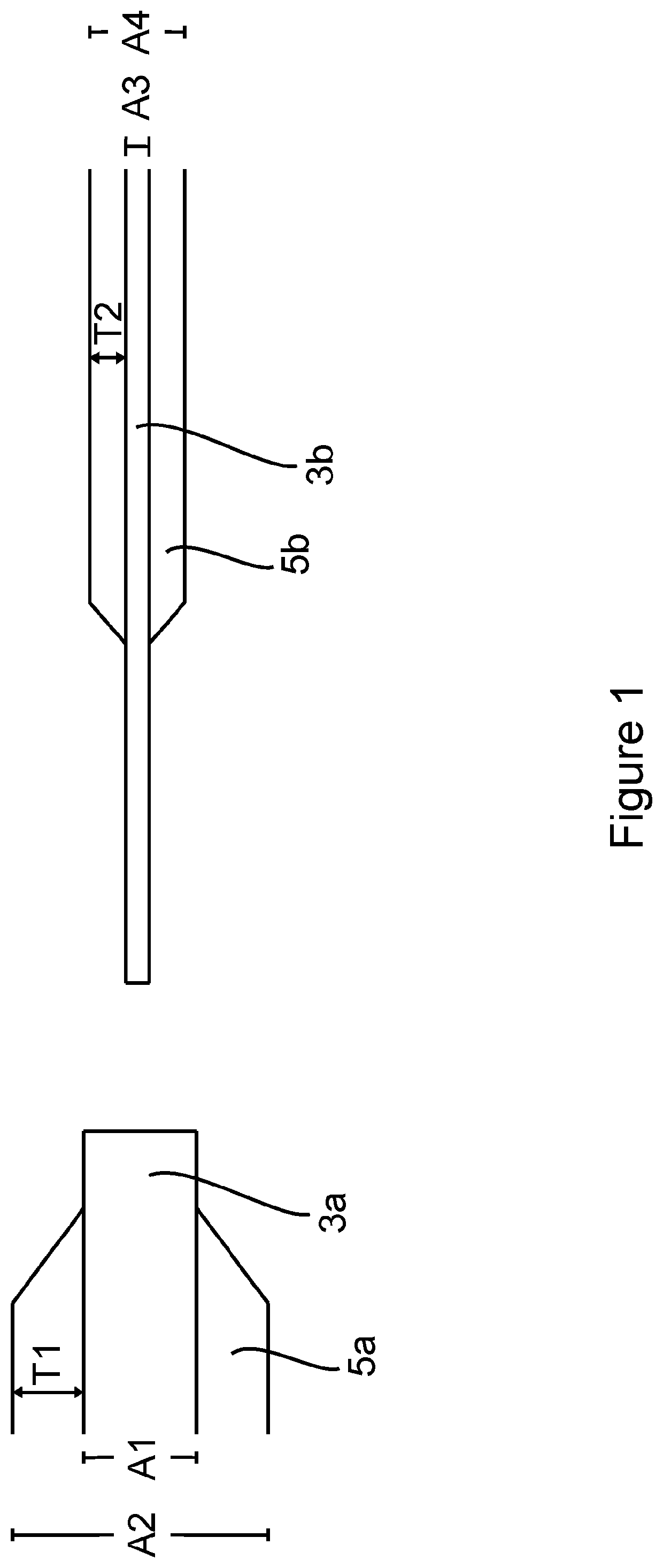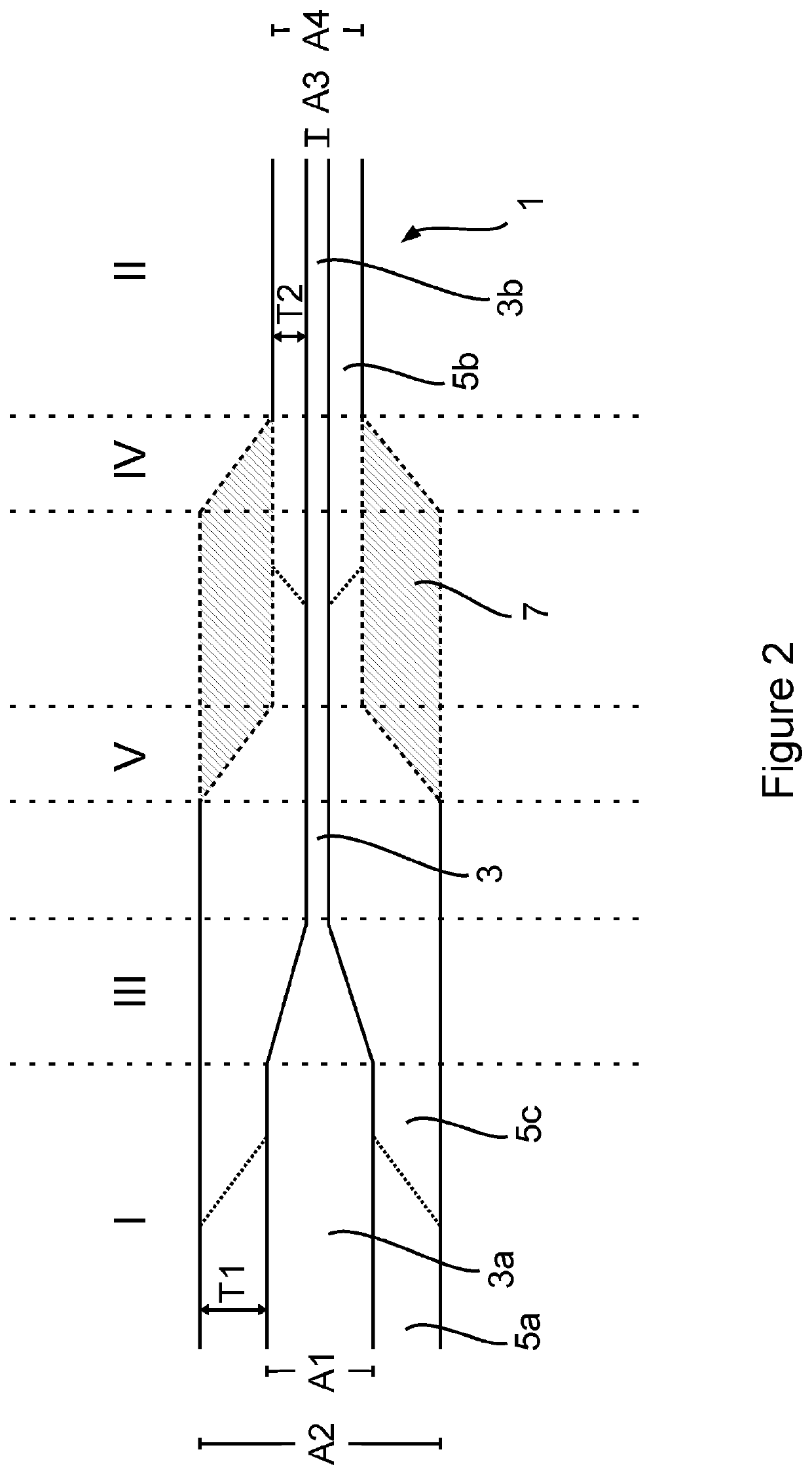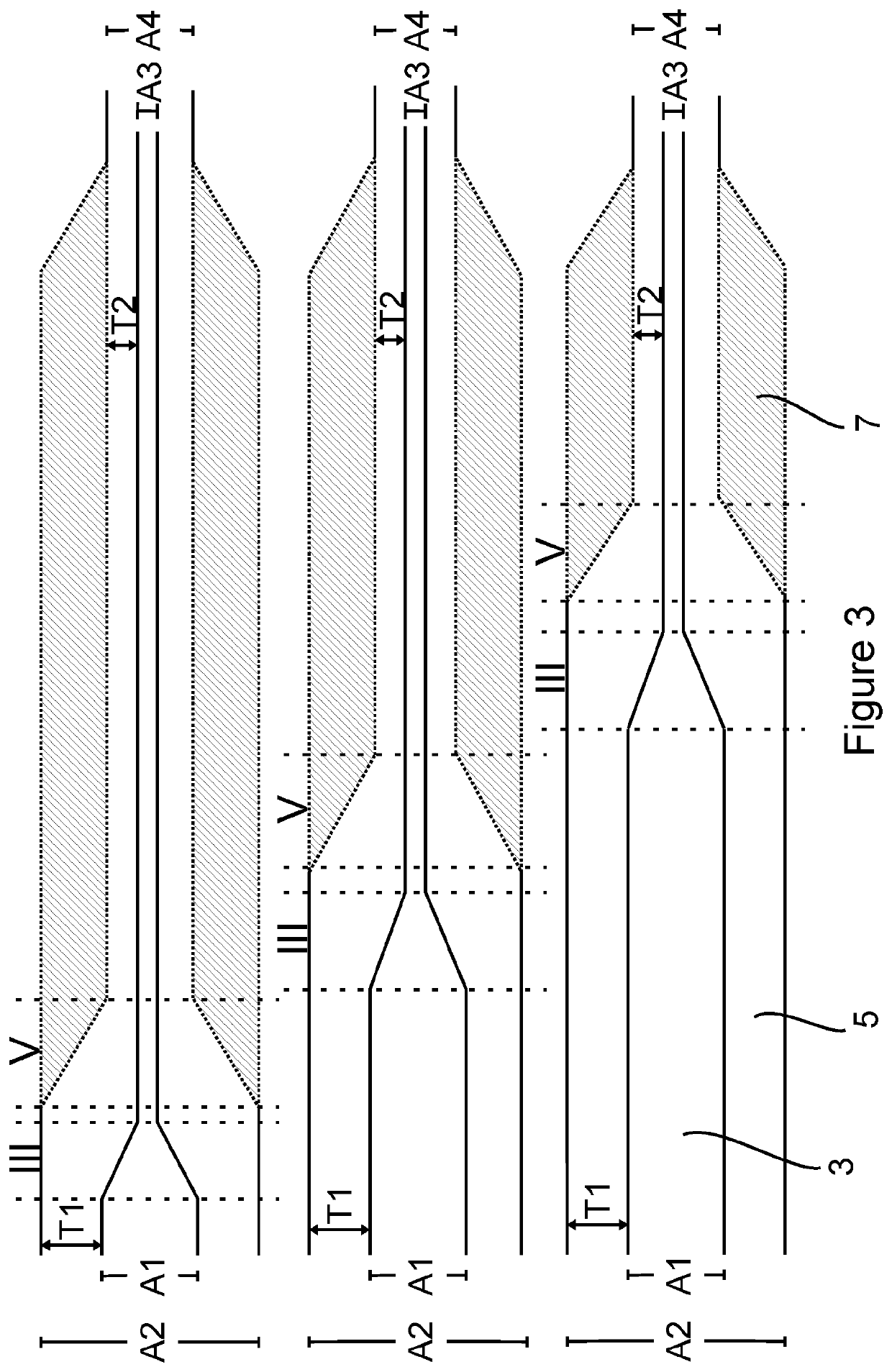Insulated submarine cable
a technology of insulated cables and submarines, applied in the direction of insulated cables, insulated conductors, plastic/resin/waxes insulators, etc., can solve the problems of material breakage, failure of insulating properties, and limited use period of such insulated cables
- Summary
- Abstract
- Description
- Claims
- Application Information
AI Technical Summary
Benefits of technology
Problems solved by technology
Method used
Image
Examples
Embodiment Construction
[0048]FIG. 1 schematically shows two separate sections of insulated cable. The first section of insulated cable (illustrated on the left-hand side of FIG. 1) includes a conductive core 3a (sometimes referred to as the conductor) and insulating material 5a surrounding the conductive core. The conductive core of the cable is usually made of a conductive metal but may be made from a non-metallic conductor such as carbon nano-tube technology. The conductive core 3a of the first section of insulated cable has a substantially constant cross-sectional area A1. The first section of insulated cable has a substantially constant overall cross-sectional area A2 and insulator thickness T1.
[0049]The second section of insulated cable (illustrated on the right-hand side of FIG. 1) also includes a conductive core 3b and insulating material 5b surrounding the conductive core. The core 3b of the second section of insulated cable has a substantially constant cross-sectional area A3, and the second sect...
PUM
| Property | Measurement | Unit |
|---|---|---|
| distance | aaaaa | aaaaa |
| distance | aaaaa | aaaaa |
| temperatures | aaaaa | aaaaa |
Abstract
Description
Claims
Application Information
 Login to View More
Login to View More - R&D
- Intellectual Property
- Life Sciences
- Materials
- Tech Scout
- Unparalleled Data Quality
- Higher Quality Content
- 60% Fewer Hallucinations
Browse by: Latest US Patents, China's latest patents, Technical Efficacy Thesaurus, Application Domain, Technology Topic, Popular Technical Reports.
© 2025 PatSnap. All rights reserved.Legal|Privacy policy|Modern Slavery Act Transparency Statement|Sitemap|About US| Contact US: help@patsnap.com



